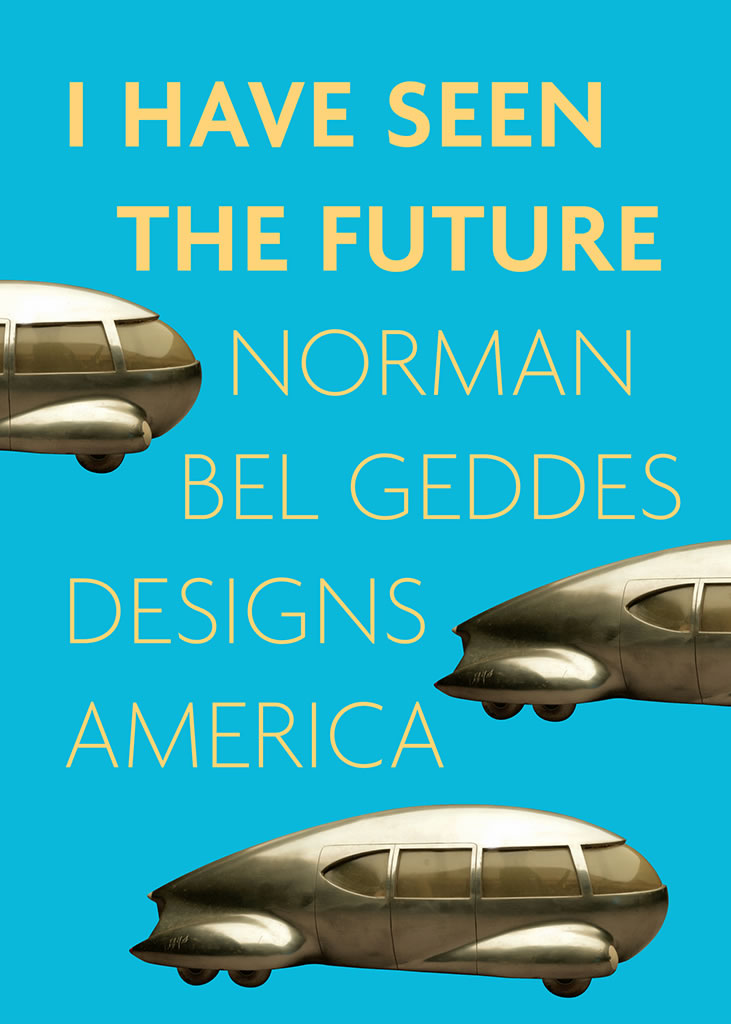I Have Seen the Future
Norman Bel Geddes Designs America
September 11, 2012 – January 6, 2013
When you drive on an interstate highway, attend a multimedia Broadway show, or watch a football game in an all-weather stadium, you owe a debt of gratitude to Norman Bel Geddes (1893–1958). Bel Geddes was both a visionary and a pragmatist who had a significant role in shaping not only modern America but also the nation's image of itself as leading the way into the future. Bel Geddes was a polymath who had no academic or professional training in the activities he mastered—designing stage sets, costumes, and lighting; creating theater buildings, offices, nightclubs, and houses; and authoring prescient books and articles.
Bel Geddes believed that art, as well as architecture and design, could make people's lives psychologically and emotionally richer. He influenced the behavior of American consumers and helped make industrial and theater design into modern businesses. Believing that communication was key to shaping the modern world, Bel Geddes popularized his vision of the future through drawings, models, and photographs. Of his utopian predictions, Bel Geddes's best-known project was the Futurama exhibit in the General Motors "Highways and Horizons" pavilion at the 1939–1940 New York World's Fair. It was an immense model of America, circa 1960, seen by 27,500 visitors daily who exited with a pin proclaiming "I Have Seen the Future."
I Have Seen the Future: Norman Bel Geddes Designs America explores the life and career of this complex and influential man and is organized into five thematic sections.
Setting the Stage: 1916–1927
In the initial phase of his professional career, Bel Geddes focused on theater design and theater spaces. Bel Geddes adapted for the American stage the principles of the so-called New Stagecraft movement in Europe, which aimed to free the theater from the strictures of bourgeois realism and to create settings for a new generation of playwrights who were exploring psychological and emotional depth in their work.
Industrious Design: 1927–1937
Eager to move beyond theater and broaden his influence over American society, Bel Geddes branched out in new directions in the late 1920s, adapting his flair for theater to architecture and interior design, pioneering the new field of industrial design, and popularizing streamlining as a design concept with his book Horizons (1932).
A Bigger World: 1937–1945
In the late 1930s Bel Geddes sought to reshape the entire American landscape. When Bel Geddes was asked to create an ad campaign for a new form of gasoline, he envisioned a Shell Oil "City of Tomorrow." With this project, pitchman Bel Geddes became urban visionary, focusing on decentralization as key to the improved city.
Futurama: 1939–1940
Bel Geddes's Futurama installation at the 1939–1940 New York World's Fair, dedicated to "building the world of tomorrow," was one of the fair's most popular attractions. This feat of imagination captured the national consciousness and highlighted Bel Geddes's talents as a modeler, futurist, and urban planner.
Total Living: 1945–1958
No longer at the epicenter of American industrial design after World War II, Bel Geddes nonetheless remained a visionary who was involved in virtually every field that defined Cold War America, from television to suburbia to urban renewal.


